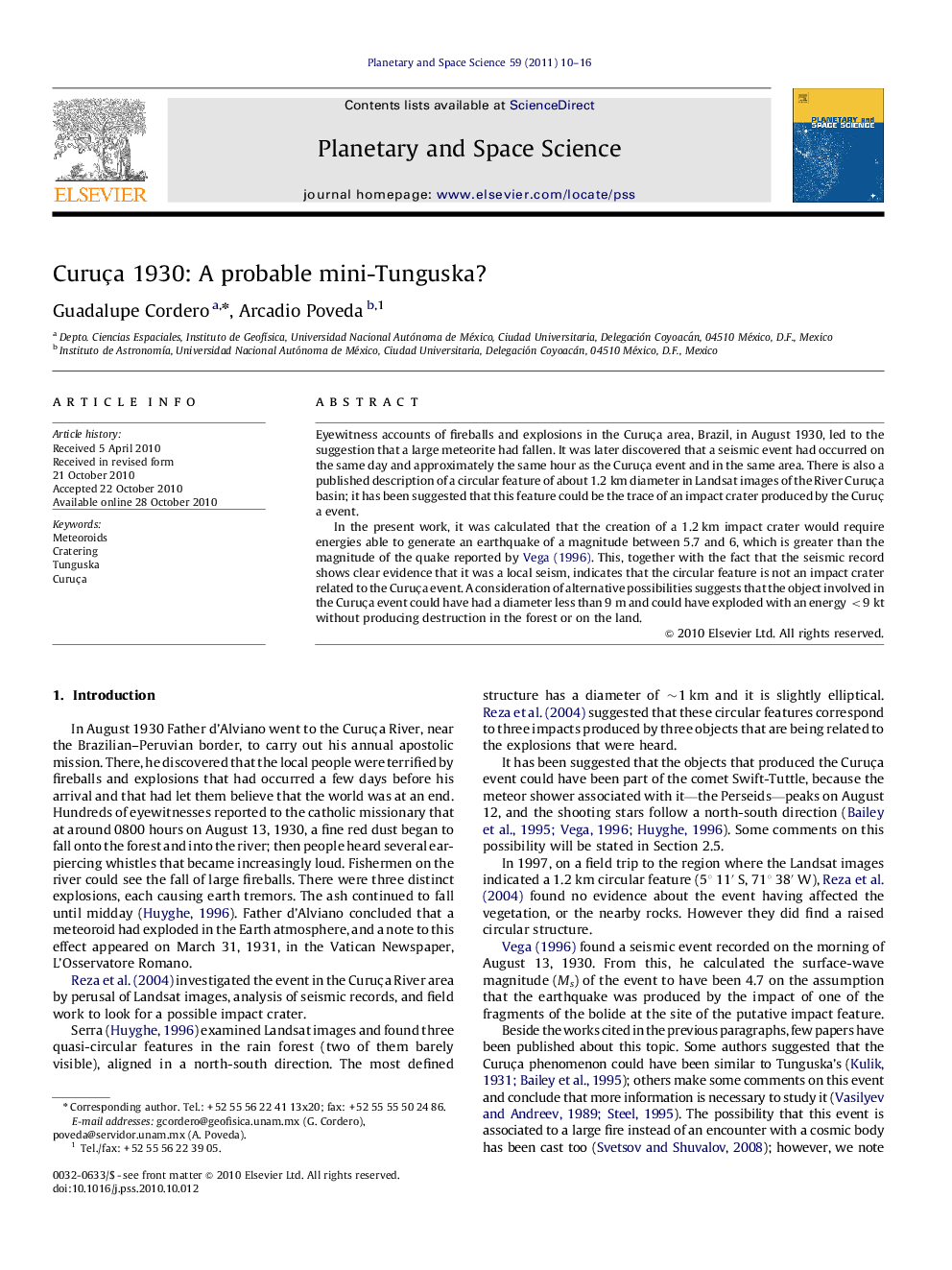| Article ID | Journal | Published Year | Pages | File Type |
|---|---|---|---|---|
| 1781558 | Planetary and Space Science | 2011 | 7 Pages |
Eyewitness accounts of fireballs and explosions in the Curuça area, Brazil, in August 1930, led to the suggestion that a large meteorite had fallen. It was later discovered that a seismic event had occurred on the same day and approximately the same hour as the Curuça event and in the same area. There is also a published description of a circular feature of about 1.2 km diameter in Landsat images of the River Curuça basin; it has been suggested that this feature could be the trace of an impact crater produced by the Curuça event.In the present work, it was calculated that the creation of a 1.2 km impact crater would require energies able to generate an earthquake of a magnitude between 5.7 and 6, which is greater than the magnitude of the quake reported by Vega (1996). This, together with the fact that the seismic record shows clear evidence that it was a local seism, indicates that the circular feature is not an impact crater related to the Curuça event. A consideration of alternative possibilities suggests that the object involved in the Curuça event could have had a diameter less than 9 m and could have exploded with an energy <9 kt without producing destruction in the forest or on the land.
